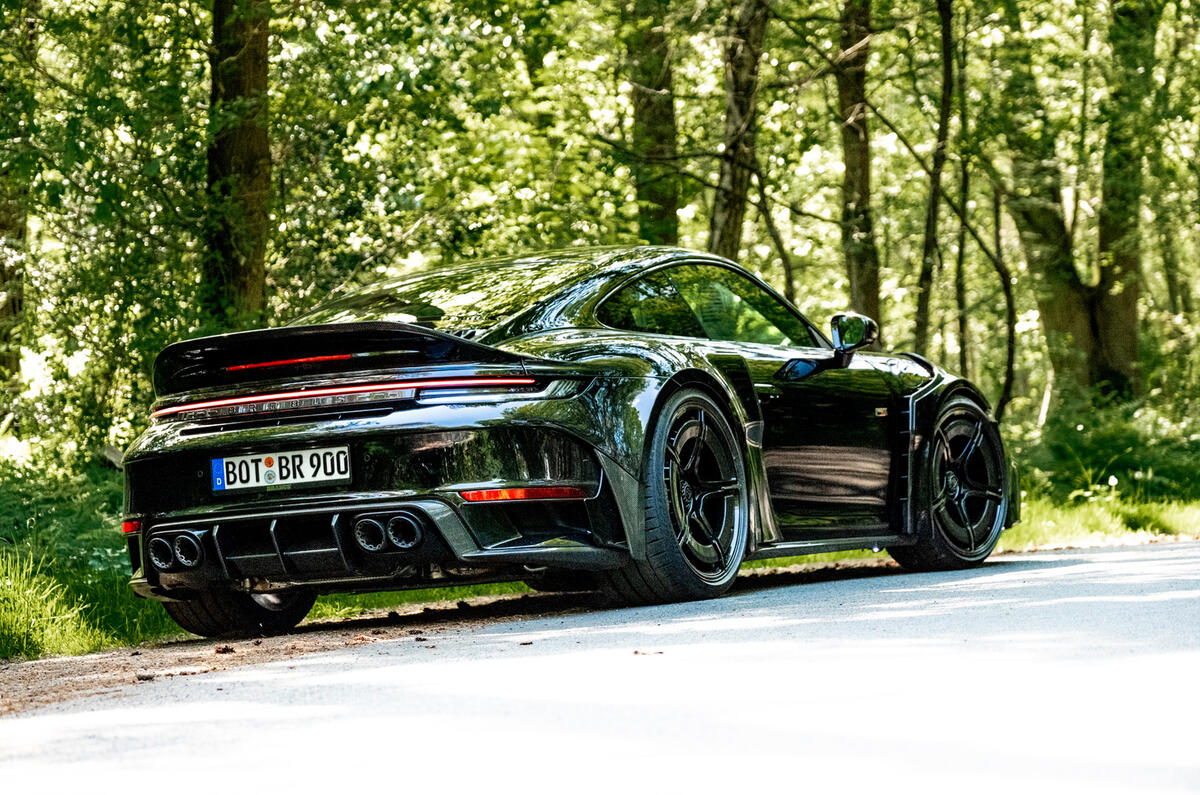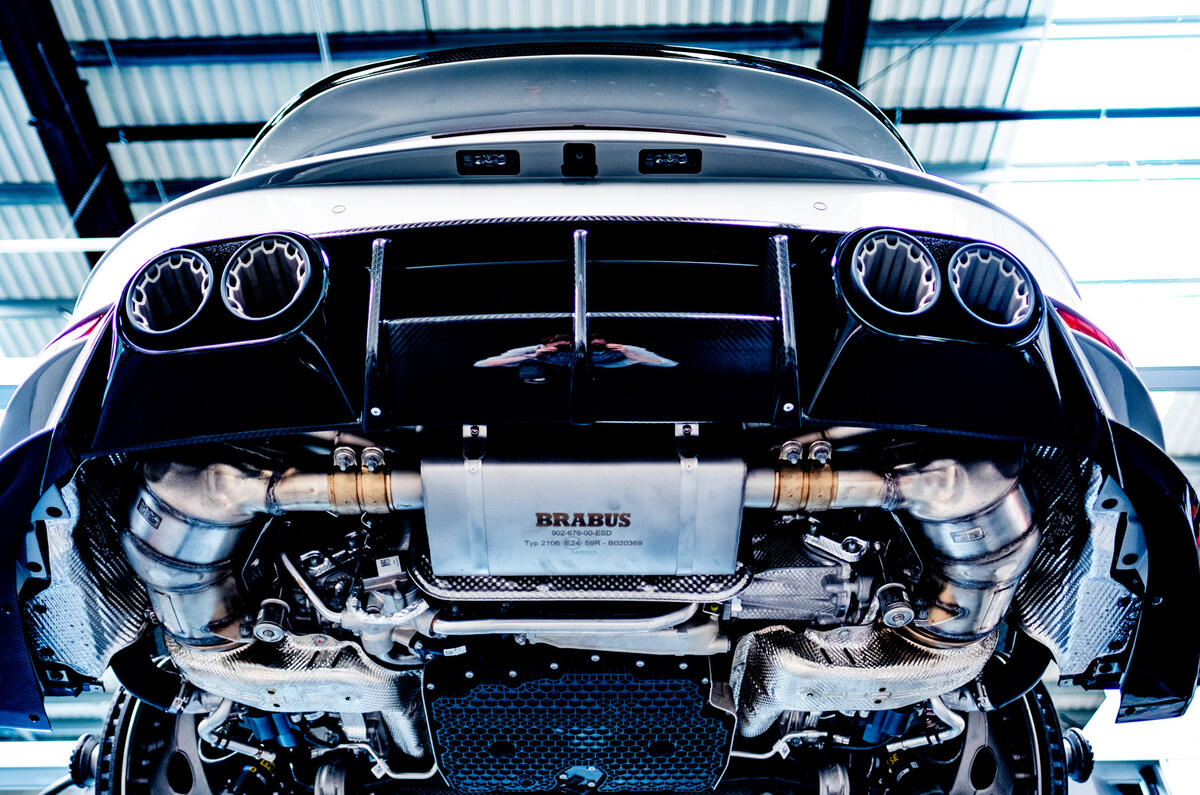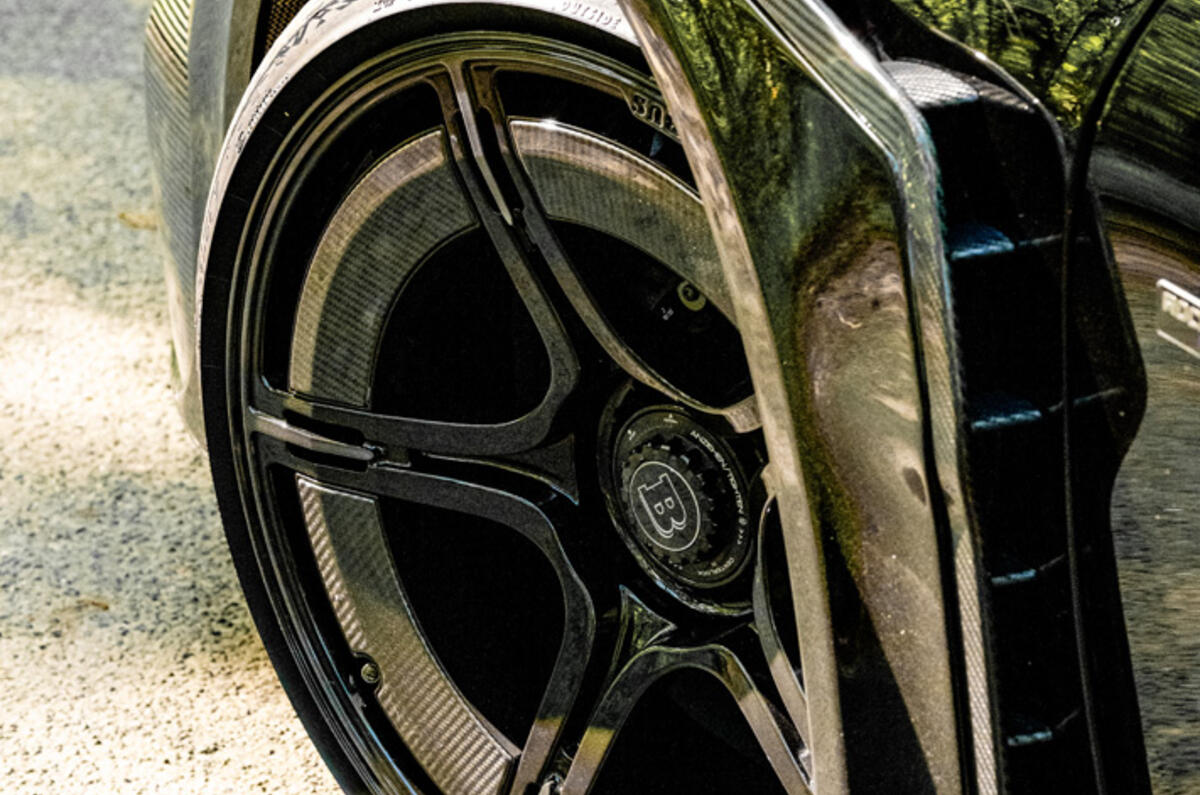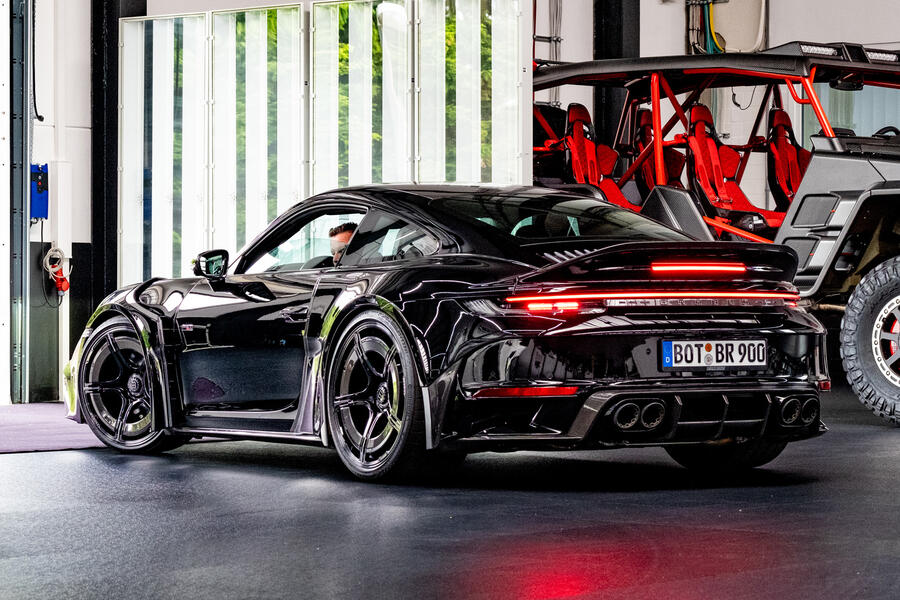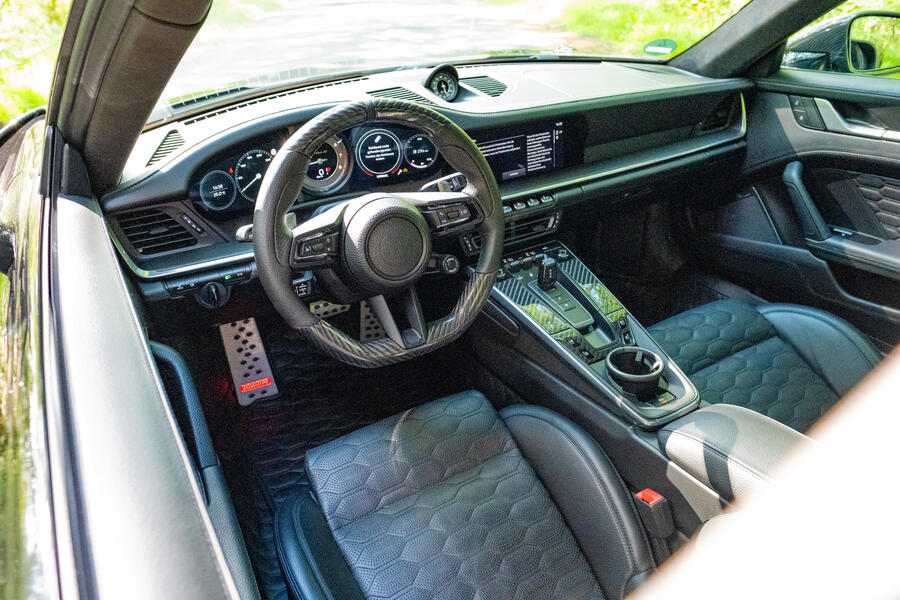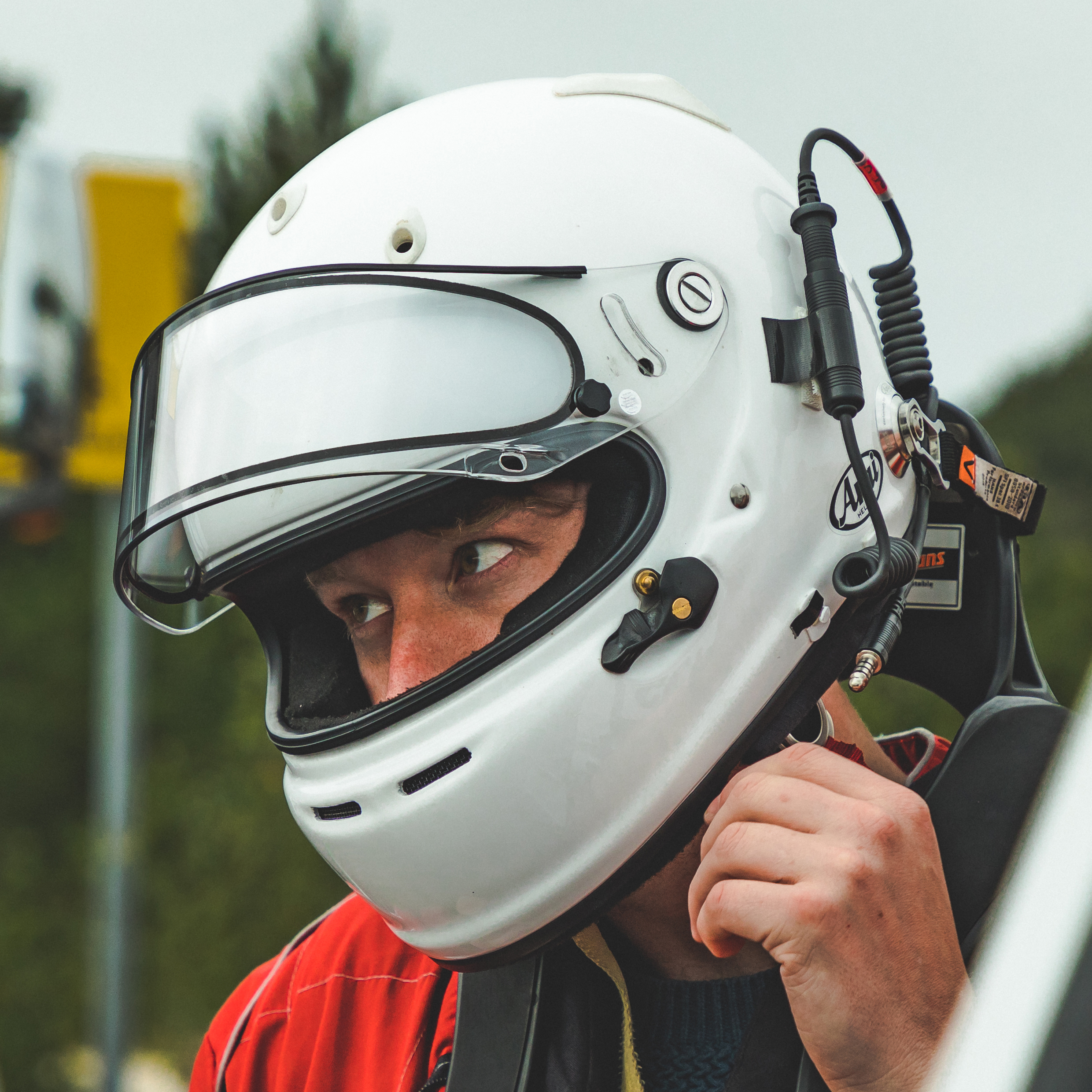Some things just go contrary to the natural automotive order, such as a Porsche 911-based Brabus conversion.
I mean, what next, an Audi RS4 by Alpina? Anybody who remembers the heyday of lunatic, Brabus-fettled Mercedes-Benzes with Ferrari-crushing power will find even the idea odd, never mind the reality. German tuners (in fairness, Brabus is more than a tuner and has manufacturer status, just like Alpina) mostly stay in their lane when it comes to their affiliations with the big manufacturers.
So Brabus has swerved off script, but don’t mistake the surprising existence of this 900 Rocket R – a €549,130 (£470,975), 25-off creation based on the 911 Turbo S – for rash decision-making. Brabus has long yearned to plough the Weissach furrow, so it has always been a matter of when, not if.
In any case, over-endowed Mercedes saloons will continue to be the beating heart of the business, as shown by the numerous half-finished AMG GT 4-Door Coupés, S-Classes and E-Classes in the workshop during our visit to the sprawling Bottrop facility.
A marauding, 8ft-tall Crawler (imagine a G-Wagen-style CFRP body on a dune-bashing tubular chassis) lurking in the corner also confirms that Brabus’s sense of humour remains in rude health.
Why do a Porsche? The reasons aren’t complicated. Brabus sought to build its most dynamic car ever and with it create an all-new Rocket – a badge reserved for only the most involved and powerful conversions. Brand allegiances aside, Brabus knows that in terms of natural agility and grip, Porsche has the better of Mercedes. It is, after all, the true sports car marque of the two.



